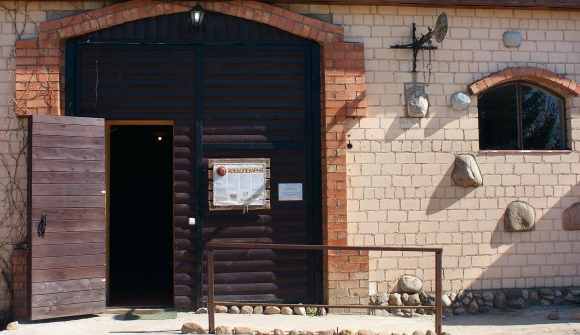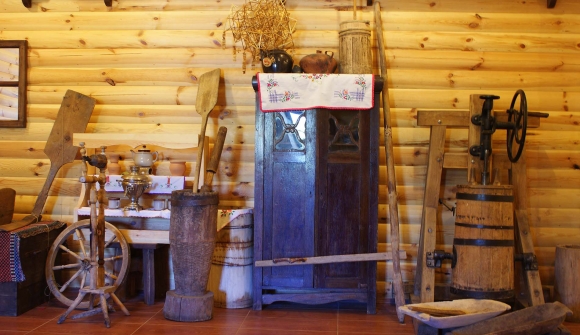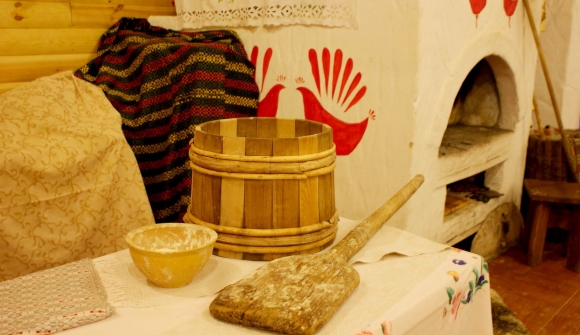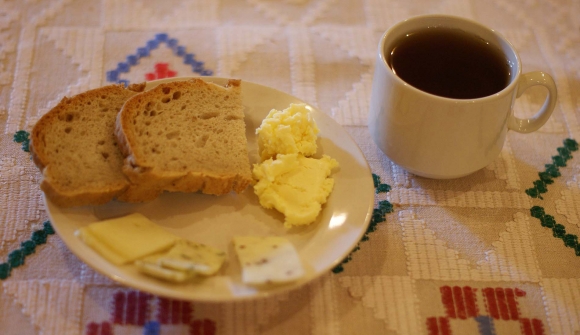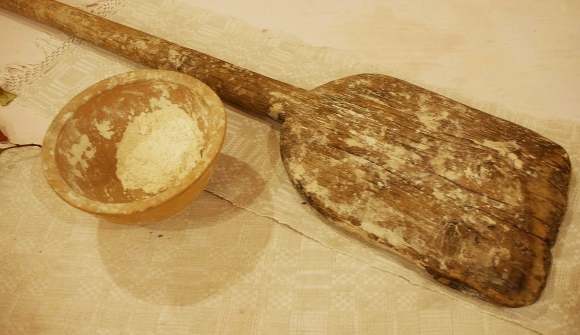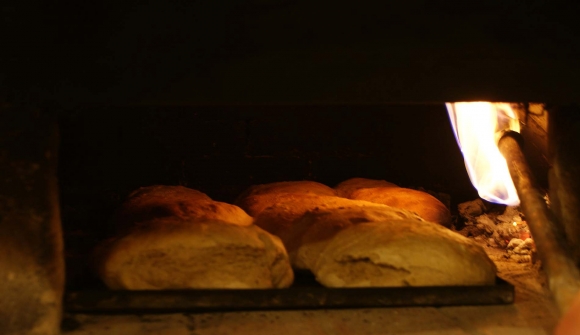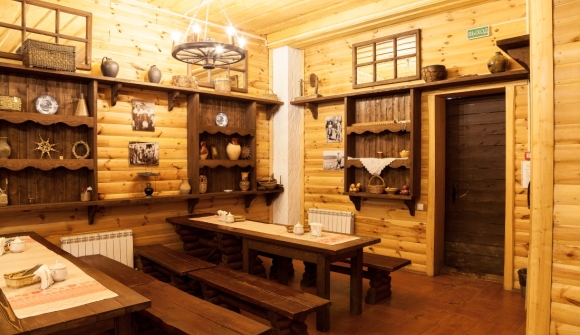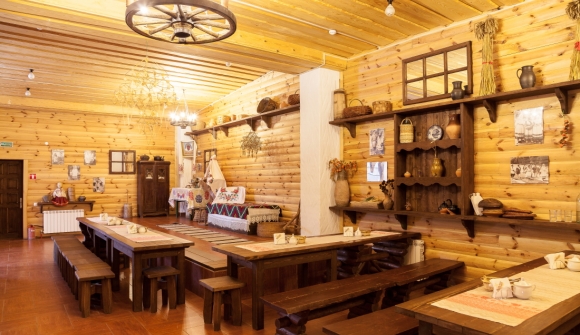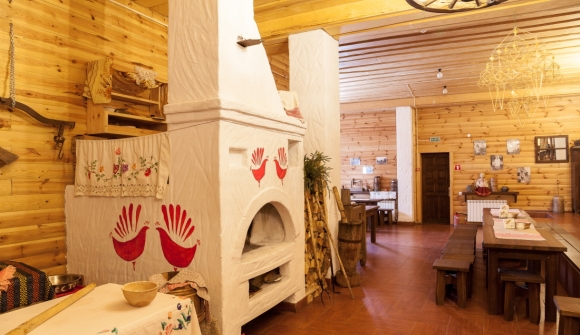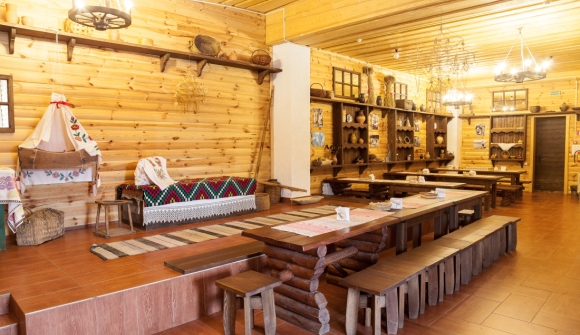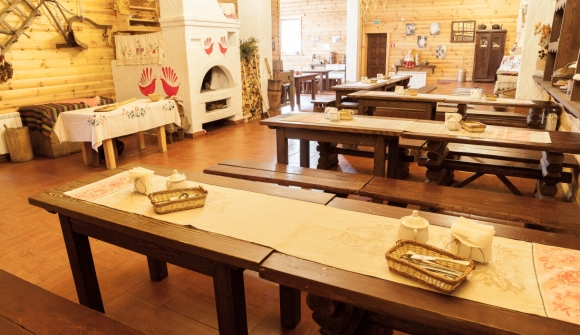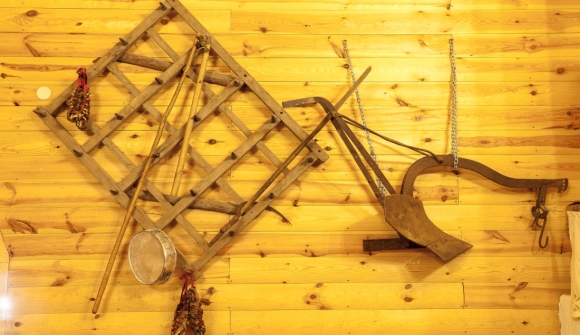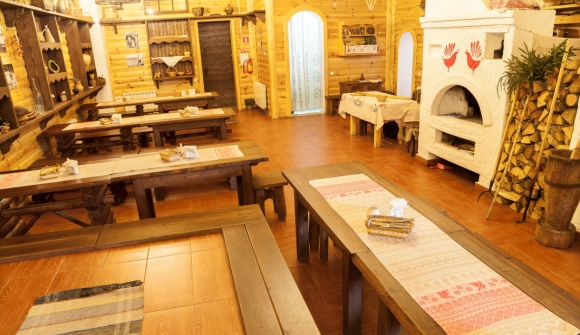Bakery
Bread in Belarusian Culture Bread has always been highly regarded and revered by people as the symbol of wealth and prosperity. Without bread any other food was considered not nourishing, so the absence of bread was an attribute of extreme poverty. 












Since early childhood, the Belarusians were brought up with a sense of respect towards bread. It was considered a great sin to drop even a crumb on the floor to say nothing of stepping on it. Bread crumbs were never given to domestic animals and never thrown away; they were dried out and used to make one of the most typical and famous Belarusian traditional beverages – the so-called kvas. There are many traditions related to bread. Before baking, a cross was drawn on the first loaf, thereby sanctifying the whole batch of bread. That loaf of bread decorated with a cross was put in the oven in the first turn but eaten in the last. According to a popular tradition, bread should never be torn into pieces with hands. It has to be crisscrossed over and cut with a knife. It was undesirable to take a new loaf of bread in the evening; it was thought that in this case the fortune would abandon the family. Bread played an important role in many family rituals and celebrations. Dear guests were met and seen off with bread and salt, special kinds of bread were baked for various wedding and childbirth rituals. It was even used to predict the fate of a new family.
How to make dough Since ancient times, baking bread has been considered a women’s privilege in Belarus. The woman who was baking bread enjoyed special respect among relatives and fellow villagers. Bread was usually baked once a week. Before starting to make dough, the baker should wash herself, pray in front of the icons and ask for their blessing. Then, the bread turned out well. It was forbidden to start making bread in a bad mood, because it was thought that it directly affected its quality. Liquid pre-dough was kneaded in a special wooden dish, which was called a kneading trough. It was always kept in the most honorable place in the house – in the so-called red corner where the icons were hung. It could not be borrowed by anyone and even taken out of the house. When kneading, the trough should stay on a pile of warm clothes and be covered with clothing on top too to make the dough rise. If there was women's clothing on the bottom, the top should be male’s, and vice versa.
How to bake bread The dough was always soured with a small piece of raw dough left on the bottom of the trough when the dough for the previous batch was made. In the morning, flour was added to the pre-dough and it was thoroughly kneaded with fists. When the dough was ready, the oven was heated and carefully swept out with a broom. Then, a piece of dough was taken from the trough; a loaf of bread was formed from it and put on a special wooden shovel, previously covered with either some flour or cabbage, maple, sweet, horseradish leaves. With the help of this shovel the loaf was placed into the oven. The baking process lasted for 1-2 hours, depending on the heat capacity of the oven. There were usually 4 to 7 loaves baked at once, depending on the size of the family. Whether the bread was ready or not was determined in different ways. If the steam from the bread was going up, then it was baked. If the loaf was bouncing on the palm from a slight knocking, it was ready. If a crumb was floating in a glass with water, the bread was baked. If when pierced with a knife or a small stick, the dough did not stick, then it was baked. If the piece of bread was pressed against a nose and it wasn’t hot, that meant that all the water had evaporated and the bread was ready. The properly baked bread was then removed from the oven, cleaned from the leaves, laid on a bench covered with a table cloth or a towel, lightly moistened with water, so that the crust remained soft, and covered with embroidered towels.
Types of Bread In the old days Belarusians did not always have pure bread, i.e. made from only rye flour. Often, crop failures, wars, natural disasters forced people to eat bread made from rye with different additions. Thus, for instance, sometimes bread was baked using wholemeal rye flour. If the gain after threshing was not sifted but only cleared of offal and empty shells, the floor got was used to make the so-called furry bread. Sometimes bread was made from rye flour mixed with some barley, oats, buckwheat, wheat flour. In the years of poor harvest Belarusians baked potato bread, using rye flour and either mashed boiled or grated fresh potatoes. Despite the pleasant taste and whiteness, this bread got dried and stale quickly. In the spring or in the years of crop failure, bread could often be baked from the oat, barley, wheat or rye chaff; the flour was used only as a binding component. This bread was considered easy to make, but not nutritious.
Sometimes, when even these ingredients were not available, sorrel or quinoa leaves, acorns, frozen potatoes were added to the rye flour. It was considered better to have at least such bread, then no bread at all. |
|
+ 375 17 133-07-47
Phone/Fax |
+ 375 29 602-52-50
|
|
+ 375 17 132-11-77
Phone/Fax |
+ 375 29 603-52-50
|
| Download Particulars | info@dudutki.by |
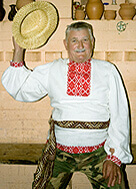
|
We invite you to visit us
on Friday till Sunday
Monday till Thursday are a day off
|
|
Mo-Th: days off
Fr-Sun: 1000 - 1800 (enter till 1700)
Dogs are not allowed
|

